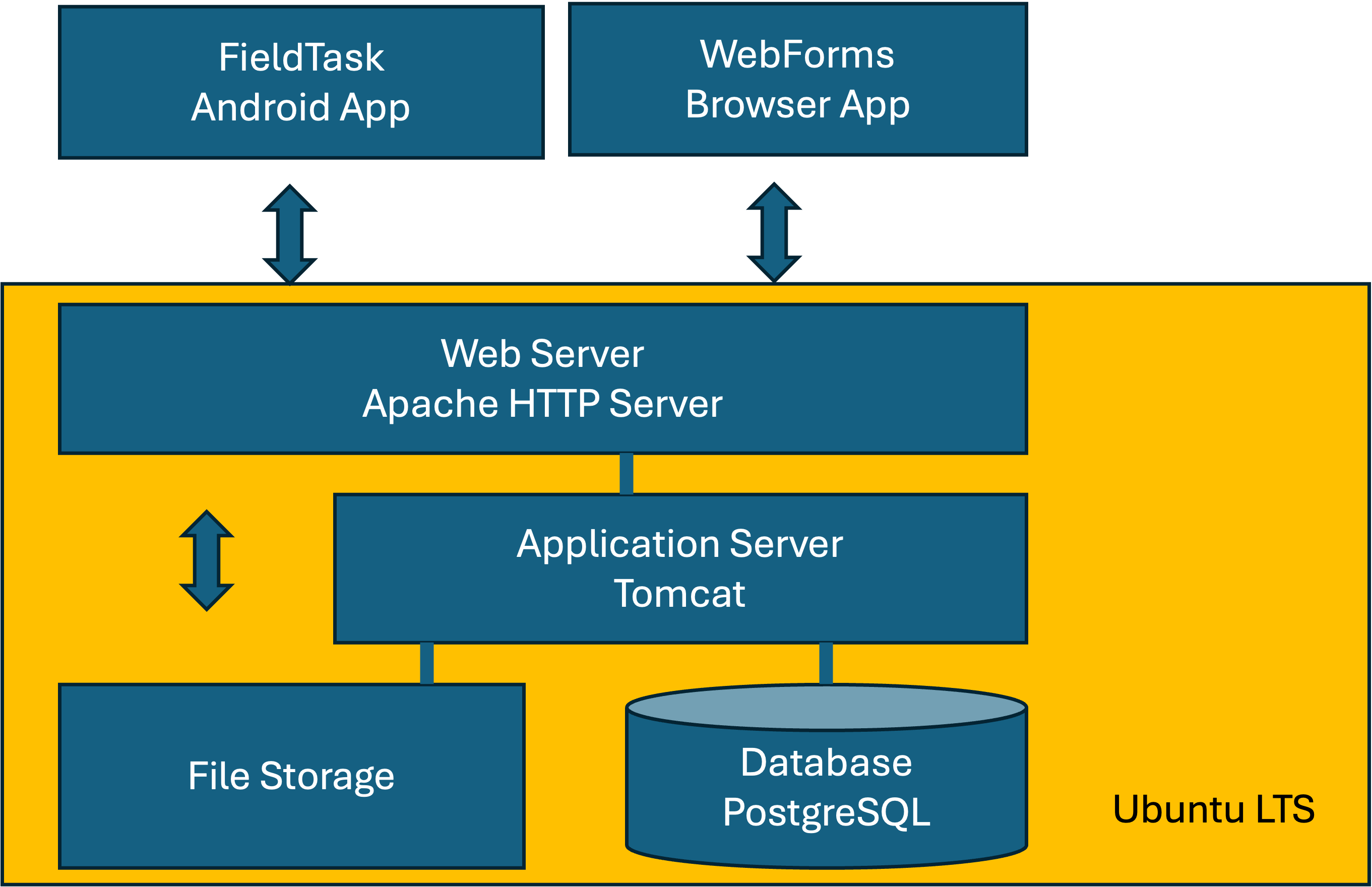Deployment Configurations
Small

Small Single Server
The minimum server configuration is:
1 CPU
2GB memory
10GB Disk
Almost certainly you will need more disk for a production system especially if you are capturing images and video. However apart from the disk, for most organisations, using Smap for M&E, this small server will be adequate.
In postgresql.conf:
Max connections: 400
In /var/lib/tomcat[x]/conf/context.xml:
MaxActive for survey_definitions and results resources: 60
In /etc/default/tomcat[x]:
JAVA_OPTS="-Djava.awt.headless=true -Xms512m -Xmx768m"
For Ubuntu 24.04+ update setenv.sh in /usr/share/tomcat9/bin to include:
export JAVA_OPTS="-Djava.awt.headless=true -Xms512m -Xmx768m"
Medium
A common vertical scaling of the server adds an additional CPU and more memory:
* 2 CPUs
* 4GB memory
* 100GB Disk
You can keep applying this vertical scaling as required however at some point you will find that you better performance by putting the database on a separate server and higher availability by using multiple application servers with a load balancer. This approach is covered in the large configuration below.
In postgresql.conf:
Max connections: 600
In /var/lib/tomcat[x]/conf/context.xml:
MaxActive for survey_definitions and results resources: 100
In /etc/default/tomcat[x] or setenv.sh(for Ubuntu 24.04+):
JAVA_OPTS="-Djava.awt.headless=true -Xms2048m -Xmx2048m"
Large

A large configuration
The actual configuration, the number of servers their size etc can vary according to your needs. The diagram shows use of AWS S3 for storage and an AWS RDS database. However other installations use Azure Blog for storage.
Configuring for a remote database
Add "export DBHOST={remote database address}" to /etc/environment
Find the "context.xml" file for tomcat. It should be at /etc/tomcat[version]/context.xml or at /var/lib/tomcat9/conf/context.xml. Then set the URL for the 2 datasources to match the URL of your remote database
Rerun deploy.sh
Sample /etc/environment:
export DBHOST=remote_db_server.myorg.com
Sample url for resource in context.xml:
url="jdbc:postgresql://remote_db_server.myorg.com:5432/survey_definitions"
Configuring a second application server
If you are using a remote database you can add additional application servers for redundancy and performance. However currently only one of these can run the subscriber batch job that applies submissions to the database. Otherwise a lot of false update errors will be reported as multiple subscribers clash.
Hence in all but one of your application servers specify in /etc/environment:
SUBSCRIBER=no
This should be specified before you install Smap into the new application server.
Apache2 Configuration
Apache uses an mpm_event server. Its configuration is in /etc/apache2/mods-available/mpm_event.conf. You can modify as required and then restart apache2